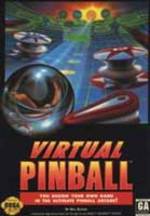This article needs additional citations for verification .(September 2019) |
| Virtual Pinball | |
|---|---|
 | |
| Developer(s) | Bill Budge |
| Publisher(s) | Electronic Arts |
| Designer(s) | Bill Budge Nick Corea Jim Simmons |
| Composer(s) | Mark Miller |
| Platform(s) | Genesis |
| Release | |
| Genre(s) | Pinball simulation Game creation system |
| Mode(s) | Single-player, multiplayer |
Virtual Pinball is a follow-up to EA's 1983 title Pinball Construction Set from the same author, Bill Budge, released 10 years later for the Sega Genesis. One to four players can choose from either 29 premade tables or design one using in-game editor tools. Designing options include ten different backgrounds and six themes, and a player can choose where objects are placed, the style of music, and the ball speed. Virtual Pinball lacks the unlimited floppy disc storage used by the original, and the ability to create self-booting disks that can be played without the construction set software.